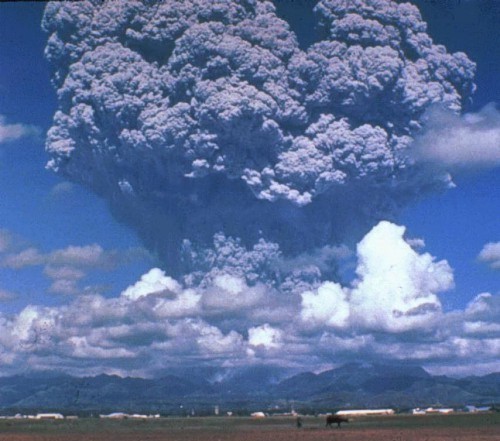
July 14, 2015, by Harry Cocks
Climate Change: the Medieval Sources
Back in 2009 a team of researchers braved polar bears and arctic storms to set up a small camp in a very remote part of the Greenland Ice Sheet, Conor Kostick writes. Their goal was to drill for a new ice-core and they were successful, setting a record for the depth that they achieved in single season. Ever since, this ice sequence has been available for analysis. A team led by Michael Sigl, based at the Desert Research Institute Nevada, were looking at the chemicals in the ice and thanks to new layer-counting techniques and methods of tracing chemical signals arrived at a new chronology for past volcanic eruptions. There was a problem, however, which is that the new results disagreed with those of established ice-core sequences. As my friend and colleague, Francis Ludlow (Yale Climate & Energy Institute) put it, ‘ice-core timescales had been misdated previously by five to ten years during the first millennium leading to inconsistencies in the proposed timing of volcanic eruptions relative to written documentary and tree-ring evidence recording the climatic responses to the same eruptions.’ Five to ten years is a significant margin of error, especially if you want to resolve questions such as whether massive volcanic eruptions have impacted on past societies, creating challenges in the form of extreme cold weather, famines, epidemics, epizootics and possibly having an association with the outbreak of the two great medieval plague pandemics. Michael Sigl’s ice-core team needed to be certain that theirs was the correct chronology. They already had good grounds for thinking so, due to a search for a signal for a cosmic ray event that shows up in tree-rings at 774-5 CE. But they approached me to ask whether the medieval historical record had events that could also act as ‘tie-points’ to match a volcanic chemical signal in the ice with an event that could be dated precisely, thanks to human observations. Thanks to my NARF and Marie Curie fellowships, I have been searching early medieval sources for references to extreme weather events and their impact 400 – 1000 CE. I could therefore supply the team with the kind of evidence they were looking for. So, for example, c. 536 Magnus Aurelius Cassidodorus wrote to his deputy, ‘all of us are still observing, as it were, a blue-coloured sun; we marvel at bodies which cast no mid-day shadow … and this has not happened in the momentary loss of an eclipse, but has assuredly been going on equally through almost the entire year.’ This description is very likely to be of a dust veil lingering for months between the observer and the sun. Francis and Michael had not indicated to me the dates that they had volcanic signals for, so when the history and the chemical traces turned out to match, we could have real confidence in the result. We now have an ice-core sequence that is accurate to within a year for the early medieval period and thus it becomes possible to investigate much more precisely the impact of past eruptions on human society.
Michael Sigl, et al, “Timing and climate forcing of volcanic eruptions for the past 2,500 years”, Nature 9 July 2015
http://www.nature.com/nature/journal/vaop/ncurrent/full/nature14565.html
No comments yet, fill out a comment to be the first

Leave a Reply